Opinion & Analysis
Who knows how to fit better than the source?
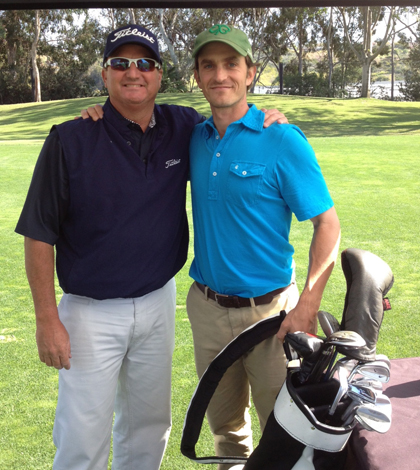
Last week I traveled to seemingly always weather-perfect Carlsbad, Calif., where I did a full club fitting at Titleist’s Oceanside facility.
It was the second time in as many months that I have visited the guys with the cursive logo, the last time being specifically for a Vokey wedge fitting. It also happened to be the second time that I have done a full club fitting.
The first time was with Nike in Spring 2012, or just a few months after swinging the driver and 3-wood for my first time ever. During that fitting, my goal was more about making contact with the ball instead of fine tuning gear for a grooved swing; and they didn’t have a lefty 3-wood at the fitting, so that stick was assumed into my bag without a full test run.
In the 12 months since then I have put in about 1,000 hours of practice and countless rounds. My consistency has improved from something resembling a blindfolded chimp to a precociously self-assured golfer looking to improve upon his 6 handicap, and it was time to get fit for some gear that can help me reach the next level.
Back in February when my Vokey TVD wedges arrived, I had never swung any sticks that were not branded with a swoosh, and was so happy with the Vokey’s performance that I decided to return to Carlsbad to switch out the remaining clubs. When I first went down there, I didn’t realize that it was possible to get fit by the same guys who fit their PGA Tour pros and was blown away by the experience, so decided that going to the source was the best way to make certain that I was getting the best fit for my game.
It was a beautiful April day in Oceanside and my club fitter was Sr. Fitting Analyst Rob Bunn. We had worked together on the wedges so he knew some of my tendencies, which was great as we could get right to work. At the beginning of the experience you change into golf shoes, grab a water (or coffee for guys like me, being a Portland boy) and head out to the pristine range where a section of perfect grass is reserved for you.
They ask you to space your divots out instead of putting them all right next to each other, as they say the grass heals better when it’s individual divots rather than a large section missing. This seems to be contrary to how most grass ranges want you to hit, but I’ll assume they know what they are talking about as they have done this for years and the sod all seems perfect:
To start, I got a hard time from the boys as I hadn’t had time to clean my grooves before flying out from Oregon. They joked with me about it — they knew I understood how important it is for spin to keep my grooves clean. But I had gone straight from course to airport and didn’t have a chance. Walking up to the facility, my last thought had been, “Please don’t look at how dirty those wedges are.”
I warmed up by hitting my gamer clubs, which were Nike Pro Combos with Project X PXI shafts (5 though 9 iron), 21- and 24-degree hybrids with Tour AD stiff shafts and a Mach Speed SQ 10.5 degree Driver with a Project X 6.0 stiff shaft. I’ve had a few Nike drivers, but for some reason that one seems to be the lesser of the evils when mixed with my swing.
I only had 13 clubs (also in the bag is a SeeMore putter, 46 degree Vokey that I use as my pitching wedge and a 50, 54 and 58 degree wedge) because I had taken the Nike 3 wood out a few months ago due to the fact that I hit the 3-hybrid just as far and more consistent. For some reason, I could never get the 3 wood to travel more than about 210 total yards, and it always felt to me like hitting golf balls with an oversized chop-stick. I’ve been testing out a number of different 3 woods, but figured I would wait until this trip to purchase one as I wanted to make sure it fit me. It didn’t make sense to buy a 3 wood a month or two before getting fit for clubs.
My fitting began with the 8 iron. Rob would hand me clubs, and I would hit some balls while he watched the flight and the Doppler radar launch monitor gathered the swing and ball data. Every time he handed me a new stick, I would swing it a few times and all sorts of different results would ring in. It was pretty astonishing. The same swing (or at least extremely similar swings) would produce five push fades or five hooks — or five fat and thin shots or five nice baby draws. It’s amazing how much the lie angle and shaft can make a difference.
We quickly decided that the AP2 712 was the right iron head, and almost as quickly that the KBS Tour stiff shafts stood out as a winner. That combo, along with a standard length and standard lie produced a nice shot nearly every time. When trying the 5 iron, the same results occurred and I was sold on the setup as was Rob. Due to the ball speed and trajectory, he decided that 1 degree strong would be the way to go with all of my irons, too.
Because of the amount of spin my swing put on the ball, he decided that I should go with 4 through 9 irons and one hybrid instead of going my old set up. My 21- and 24-degree hybrids produced very similar shots, so it made sense to me to have one rescue and a 4-iron, as in theory the 4 iron would be easier to control. So the next step was finding the right hybrid.
I was having issues with all of my swings, in part because my gamer irons had been, for some reason, 3 to 4 degrees flatter than I needed. It’s an entirely different topic, but along with an overly flat swing I had ingrained a wrist flip through the impact zone. Now that I was trying out standard lie clubs and have been working on a steeper swing, my miss was to keep that wrist flip in the swing and hook some shots. Rob saw this and after struggling with the hybrids, he decided to switch it up and fit me for a driver. So, we took a detour and started hitting some 913 drivers.
The driver was my No. 1 priority, and main reason for wanting to go to Titleist to get professionally fit. I was happy to see that TPI Oceanside had plenty of Lefty options.
I’ve been struggling with that stick since first hitting one in mid-November 2011, and wanted to take the uncertainty of ill-fitting gear out of the equation. It’s far too easy to blame your sticks if you are uncertain of their characteristics, and blaming gear will never help you improve.
Instead, I NEEDED to find a driver that I KNEW fit me, so I could move on and focus solely on technique and trust it to move forward. My driving has been like Bill Paxton’s acting: almost always sub-par, but on random occasions showing up and surprising everyone. Not good enough and I have been focusing on tee shots in practice.
He first gave me a regular flex shaft, and I sliced a ball over the left fence that seemed way to high to hit over. Then pull-hooked one off the planet. It was pretty obvious I needed a bit less action between my hands and the club head, so we went to stiffer.
I was still lacking in control and missing too far in both directions, so the next step was to invite Titleist Vice President of Tour Promotions Larry Bobka to check out my swing. Larry was able to identify a few things that I could do to improve consistency. I listened to his advice, which happened to be exactly what I was working on back in Portland, and started seeing great results once they put a 913 D3 head on a Speeder VC 7.2 Extra Stiff 44.5 inch shaft that was tipped 0.5 inches.
I knew I didn’t like regular or even stiff shafts, but this extra stiff felt awesome. Even though we went with a 44.5 inch shaft, my ball speed on the range was still between 155 and 160 mph, and Larry said with some form improvements I could see that increase by 5 to 6 mph. That would put me right around the PGA Tour average of 165 mph ball speed with the driver. I know I’ll never be the longest guy by any means, but if I can get my tee shots to PGA Tour average then I know I will be able to keep up with the crowd.
I hit a number of drives with this setup and was very happy with the results. It seemed like the perfect fit. Now the goal was to find a 3 wood and hybrid to fill the final two gaps in the bag.
The 3 wood wasn’t too tough now that we knew more about my swing via the driver fitting. Rob went with a couple of options before landing on the 913F D2 (15 degrees) with an extra stiff Diamana White Board Plus 82 shaft that was 0.5 inches under standard length. We tipped its shaft 0.5 inches as well, and it felt great.
I loved the control that I had with the extra stiff shaft, because it felt like the club head was staying with me no matter how hard or easy I wanted to swing. The numbers were good, too, as I was getting about 140 to 145 mph of ball speed. It was hard to tell what distance things were flying because it was into a stiff wind, but the shot shape was nice and the ball speed was what they were looking for so all was well.
The final step was the hybrid. Now that I was more confident and my swing was under control, it was much easier to find the right fit. Just a few options in, we went with the 913H D3 (19 degrees) with a Diamana Blue Board Plus 82 extra stiff shaft at a standard length. It was odd, but the standard length hybrid fit better, even though the driver and 3 wood were best fit at 0.5 inches shorter than standard.
I never would have guessed at most of these settings, but that is why I went to the source to figure out what I should be hitting. When I last was fit for clubs more than a year ago I had been swinging woods and drivers for barely four months and had not come close to grooving a swing. In fact, during my original fitting in early 2012 my main goal was just to hit the ball — I wasn’t thinking about shot shape and control. I can imagine that it was very hard to fit me into anything, as my swing was so new.
A lot of time and practice has happened since that fitting and it is crucial for performance to stay on top of your gear. I am very excited about getting these new sticks and cannot wait to start practicing with them. There will definitely be an adjustment period as the lies, length, weights, etc. are different, but after a week or two of grinding on the course and range the changes will hopefully start to pay off.
The next post will be about the launch monitor specifics between my current clubs and the new Titleists that will arrive soon. We shall get to the bottom of exactly how much periodically getting fit for sticks can positively change your game through some concrete data.
To wrap things up, here’s “What’s in the bag.”
Driver: Titleist 913 D3 (9.5 degrees)
Setting: D4
Shaft: Fujikura Motore Speeder VC 7.2 X (Tipped 0.5 inches, 0.5 inches under standard)
3 Wood: Titleist 913F D2 (15 degrees)
Setting: D4
Shaft: Mitsubishi Rayon Diamana White Board Plus 82X (Tipped 0.5 inches, 0.5 inches under standard)
Hybrid: Titleist 913H D3 (19 degrees)
Shaft: Mitsubishi Rayon Diamana Blue Board plus 82X
Irons: Titleist AP2 (4-9, bent 1 degree strong)
Shafts: KBS Tour (S-Flex)
Wedges: Titleist Vokey SM4 (46-08 and 50-08), Vokey TVD M Grind (54 and 58)
Shafts: Dynamic Gold S200
Putter: SeeMore mFGP
Ball: Titleist Pro V1X
Editor’s Note: The cost of an individual fitting (metal woods, irons or wedges) at TPI Oceanside is $200. A full bag fitting is $500. All equipment is sold separately through authorized Titleist accounts.
- LIKE4
- LEGIT0
- WOW0
- LOL0
- IDHT0
- FLOP0
- OB0
- SHANK0
19th Hole
Vincenzi’s 2024 Zurich Classic of New Orleans betting preview

The PGA TOUR heads to New Orleans to play the 2023 Zurich Classic of New Orleans. In a welcome change from the usual stroke play, the Zurich Classic is a team event. On Thursday and Saturday, the teams play best ball, and on Friday and Sunday the teams play alternate shot.
TPC Louisiana is a par 72 that measures 7,425 yards. The course features some short par 4s and plenty of water and bunkers, which makes for a lot of exciting risk/reward scenarios for competitors. Pete Dye designed the course in 2004 specifically for the Zurich Classic, although the event didn’t make its debut until 2007 because of Hurricane Katrina.
Coming off of the Masters and a signature event in consecutive weeks, the field this week is a step down, and understandably so. Many of the world’s top players will be using this time to rest after a busy stretch.
However, there are some interesting teams this season with some stars making surprise appearances in the team event. Some notable teams include Patrick Cantlay and Xander Schauffele, Rory McIlroy and Shane Lowry, Collin Morikawa and Kurt Kitayama, Will Zalatoris and Sahith Theegala as well as a few Canadian teams, Nick Taylor and Adam Hadwin and Taylor Pendrith and Corey Conners.
Past Winners at TPC Louisiana
- 2023: Riley/Hardy (-30)
- 2022: Cantlay/Schauffele (-29)
- 2021: Leishman/Smith (-20)
- 2019: Palmer/Rahm (-26)
- 2018: Horschel/Piercy (-22)
- 2017: Blixt/Smith (-27)
2024 Zurich Classic of New Orleans Picks
Tom Hoge/Maverick McNealy +2500 (DraftKings)
Tom Hoge is coming off of a solid T18 finish at the RBC Heritage and finished T13 at last year’s Zurich Classic alongside Harris English.
This season, Hoge is having one of his best years on Tour in terms of Strokes Gained: Approach. In his last 24 rounds, the only player to top him on the category is Scottie Scheffler. Hoge has been solid on Pete Dye designs, ranking 28th in the field over his past 36 rounds.
McNealy is also having a solid season. He’s finished T6 at the Waste Management Phoenix Open and T9 at the PLAYERS Championship. He recently started working with world renowned swing coach, Butch Harmon, and its seemingly paid dividends in 2024.
Keith Mitchell/Joel Dahmen +4000 (DraftKings)
Keith Mitchell is having a fantastic season, finishing in the top-20 of five of his past seven starts on Tour. Most recently, Mitchell finished T14 at the Valero Texas Open and gained a whopping 6.0 strokes off the tee. He finished 6th at last year’s Zurich Classic.
Joel Dahmen is having a resurgent year and has been dialed in with his irons. He also has a T11 finish at the PLAYERS Championship at TPC Sawgrass which is another Pete Dye track. With Mitchell’s length and Dahmen’s ability to put it close with his short irons, the Mitchell/Dahmen combination will be dangerous this week.
Taylor Moore/Matt NeSmith +6500 (DraftKings)
Taylor Moore has quickly developed into one of the more consistent players on Tour. He’s finished in the top-20 in three of his past four starts, including a very impressive showing at The Masters, finishing T20. He’s also finished T4 at this event in consecutive seasons alongside Matt NeSmith.
NeSmith isn’t having a great 2024, but has seemed to elevate his game in this format. He finished T26 at Pete Dye’s TPC Sawgrass, which gives the 30-year-old something to build off of. NeSmith is also a great putter on Bermudagrass, which could help elevate Moore’s ball striking prowess.
- LIKE6
- LEGIT1
- WOW1
- LOL0
- IDHT0
- FLOP2
- OB1
- SHANK1
19th Hole
Vincenzi’s 2024 LIV Adelaide betting preview: Cam Smith ready for big week down under

After having four of the top twelve players on the leaderboard at The Masters, LIV Golf is set for their fifth event of the season: LIV Adelaide.
For both LIV fans and golf fans in Australia, LIV Adelaide is one of the most anticipated events of the year. With 35,000 people expected to attend each day of the tournament, the Grange Golf Club will be crawling with fans who are passionate about the sport of golf. The 12th hole, better known as “the watering hole”, is sure to have the rowdiest of the fans cheering after a long day of drinking some Leishman Lager.
The Grange Golf Club is a par-72 that measures 6,946 yards. The course features minimal resistance, as golfers went extremely low last season. In 2023, Talor Gooch shot consecutive rounds of 62 on Thursday and Friday, giving himself a gigantic cushion heading into championship Sunday. Things got tight for a while, but in the end, the Oklahoma State product was able to hold off The Crushers’ Anirban Lahiri for a three-shot victory.
The Four Aces won the team competition with the Range Goats finishing second.
*All Images Courtesy of LIV Golf*
Past Winners at LIV Adelaide
- 2023: Talor Gooch (-19)
Stat Leaders Through LIV Miami
Green in Regulation
- Richard Bland
- Jon Rahm
- Paul Casey
Fairways Hit
- Abraham Ancer
- Graeme McDowell
- Henrik Stenson
Driving Distance
- Bryson DeChambeau
- Joaquin Niemann
- Dean Burmester
Putting
- Cameron Smith
- Louis Oosthuizen
- Matt Jones
2024 LIV Adelaide Picks
Cameron Smith +1400 (DraftKings)
When I pulled up the odds for LIV Adelaide, I was more than a little surprised to see multiple golfers listed ahead of Cameron Smith on the betting board. A few starts ago, Cam finished runner-up at LIV Hong Kong, which is a golf course that absolutely suits his eye. Augusta National in another course that Smith could roll out of bed and finish in the top-ten at, and he did so two weeks ago at The Masters, finishing T6.
At Augusta, he gained strokes on the field on approach, off the tee (slightly), and of course, around the green and putting. Smith able to get in the mix at a major championship despite coming into the week feeling under the weather tells me that his game is once again rounding into form.
The Grange Golf Club is another course that undoubtedly suits the Australian. Smith is obviously incredibly comfortable playing in front of the Aussie faithful and has won three Australian PGA Championship’s. The course is very short and will allow Smith to play conservative off the tee, mitigating his most glaring weakness. With birdies available all over the golf course, there’s a chance the event turns into a putting contest, and there’s no one on the planet I’d rather have in one of those than Cam Smith.

Louis Oosthuizen +2200 (DraftKings)
Louis Oosthuizen has simply been one of the best players on LIV in the 2024 seas0n. The South African has finished in the top-10 on the LIV leaderboard in three of his five starts, with his best coming in Jeddah, where he finished T2. Perhaps more impressively, Oosthuizen finished T7 at LIV Miami, which took place at Doral’s “Blue Monster”, an absolutely massive golf course. Given that Louis is on the shorter side in terms of distance off the tee, his ability to play well in Miami shows how dialed he is with the irons this season.
In addition to the LIV finishes, Oosthuizen won back-to-back starts on the DP World Tour in December at the Alfred Dunhill Championship and the Mauritus Open. He also finished runner-up at the end of February in the International Series Oman. The 41-year-old has been one of the most consistent performers of 2024, regardless of tour.
For the season, Louis ranks 4th on LIV in birdies made, T9 in fairways hit and first in putting. He ranks 32nd in driving distance, but that won’t be an issue at this short course. Last season, he finished T11 at the event, but was in decent position going into the final round but fell back after shooting 70 while the rest of the field went low. This season, Oosthuizen comes into the event in peak form, and the course should be a perfect fit for his smooth swing and hot putter this week.

- LIKE10
- LEGIT2
- WOW0
- LOL0
- IDHT0
- FLOP0
- OB0
- SHANK0
Opinion & Analysis
The Wedge Guy: What really makes a wedge work? Part 1

Of all the clubs in our bags, wedges are almost always the simplest in construction and, therefore, the easiest to analyze what might make one work differently from another if you know what to look for.
Wedges are a lot less mysterious than drivers, of course, as the major brands are working with a lot of “pixie dust” inside these modern marvels. That’s carrying over more to irons now, with so many new models featuring internal multi-material technologies, and almost all of them having a “badge” or insert in the back to allow more complex graphics while hiding the actual distribution of mass.
But when it comes to wedges, most on the market today are still single pieces of molded steel, either cast or forged into that shape. So, if you look closely at where the mass is distributed, it’s pretty clear how that wedge is going to perform.
To start, because of their wider soles, the majority of the mass of almost any wedge is along the bottom third of the clubhead. So, the best wedge shots are always those hit between the 2nd and 5th grooves so that more mass is directly behind that impact. Elite tour professionals practice incessantly to learn to do that consistently, wearing out a spot about the size of a penny right there. If impact moves higher than that, the face is dramatically thinner, so smash factor is compromised significantly, which reduces the overall distance the ball will fly.
Every one of us, tour players included, knows that maddening shot that we feel a bit high on the face and it doesn’t go anywhere, it’s not your fault.
If your wedges show a wear pattern the size of a silver dollar, and centered above the 3rd or 4th groove, you are not getting anywhere near the same performance from shot to shot. Robot testing proves impact even two to three grooves higher in the face can cause distance loss of up to 35 to 55 feet with modern ‘tour design’ wedges.
In addition, as impact moves above the center of mass, the golf club principle of gear effect causes the ball to fly higher with less spin. Think of modern drivers for a minute. The “holy grail” of driving is high launch and low spin, and the driver engineers are pulling out all stops to get the mass as low in the clubhead as possible to optimize this combination.
Where is all the mass in your wedges? Low. So, disregarding the higher lofts, wedges “want” to launch the ball high with low spin – exactly the opposite of what good wedge play requires penetrating ball flight with high spin.
While almost all major brand wedges have begun putting a tiny bit more thickness in the top portion of the clubhead, conventional and modern ‘tour design’ wedges perform pretty much like they always have. Elite players learn to hit those crisp, spinny penetrating wedge shots by spending lots of practice time learning to consistently make contact low in the face.
So, what about grooves and face texture?
Grooves on any club can only do so much, and no one has any material advantage here. The USGA tightly defines what we manufacturers can do with grooves and face texture, and modern manufacturing techniques allow all of us to push those limits ever closer. And we all do. End of story.
Then there’s the topic of bounce and grinds, the most complex and confusing part of the wedge formula. Many top brands offer a complex array of sole configurations, all of them admittedly specialized to a particular kind of lie or turf conditions, and/or a particular divot pattern.
But if you don’t play the same turf all the time, and make the same size divot on every swing, how would you ever figure this out?
The only way is to take any wedge you are considering and play it a few rounds, hitting all the shots you face and observing the results. There’s simply no other way.
So, hopefully this will inspire a lively conversation in our comments section, and I’ll chime in to answer any questions you might have.
And next week, I’ll dive into the rest of the wedge formula. Yes, shafts, grips and specifications are essential, too.
- LIKE31
- LEGIT7
- WOW1
- LOL1
- IDHT2
- FLOP3
- OB1
- SHANK3
-

 19th Hole2 weeks ago
19th Hole2 weeks agoDave Portnoy places monstrous outright bet for the 2024 Masters
-

 19th Hole2 weeks ago
19th Hole2 weeks agoTiger Woods arrives at 2024 Masters equipped with a putter that may surprise you
-

 19th Hole16 hours ago
19th Hole16 hours ago‘Absolutely crazy’ – Major champ lays into Patrick Cantlay over his decision on final hole of RBC Heritage
-

 19th Hole3 weeks ago
19th Hole3 weeks agoReport: Tiger Woods has ‘eliminated sex’ in preparation for the 2024 Masters
-

 19th Hole1 week ago
19th Hole1 week agoTwo star names reportedly blanked Jon Rahm all week at the Masters
-

 19th Hole7 days ago
19th Hole7 days agoReport: LIV Golf identifies latest star name they hope to sign to breakaway tour
-

 19th Hole1 week ago
19th Hole1 week agoNeal Shipley presser ends in awkward fashion after reporter claims Tiger handed him note on 8th fairway
-

 19th Hole6 days ago
19th Hole6 days agoBrandel Chamblee has ‘no doubt’ who started the McIlroy/LIV rumor and why

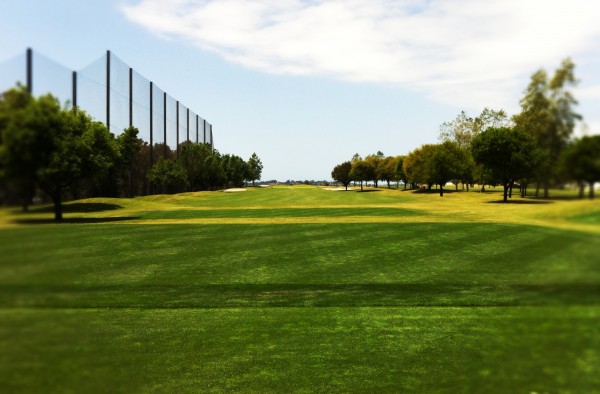
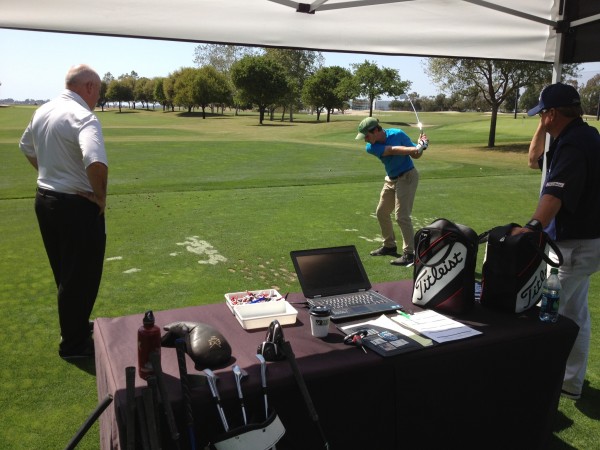


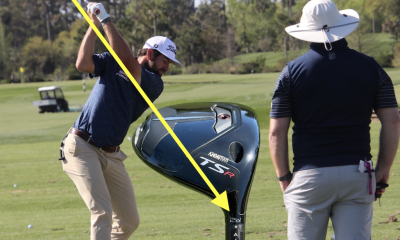



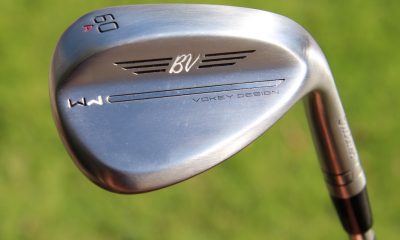

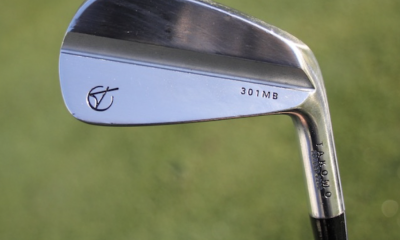

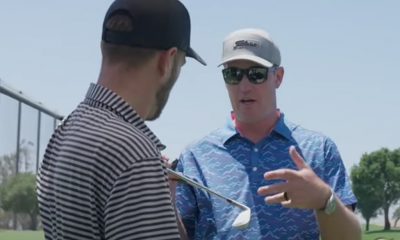

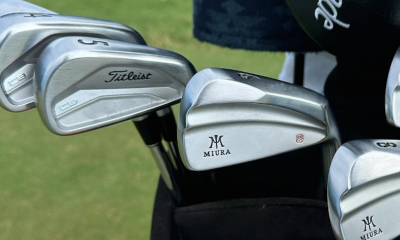













David
May 3, 2013 at 8:16 pm
Dan,
Nice that you got to go to the source! What is missing now is a Scotty Cameron Putter!!!! If your going to get the best gear you need to go all the way 🙂
Pingback: Who knows how to fit better than the source? – GolfWRX | Golf Grip Instruction
Mike
May 2, 2013 at 5:19 pm
Nice write up, Dan. I’m interested in your bag. Is it custom made? Also, all Titleist but no Scotty?
Dan Plan
May 3, 2013 at 7:39 pm
Hi Mike,
It’s a custom Vokey bag but I believe that you can order one online. I really like my SeeMore putter so didn’t see a reason to switch over.
Thanks!
Dan
Nick
May 2, 2013 at 3:10 pm
Titleist is the bomb. Got fit by them a year ago and saw immediete improvement. The change in my driver trajectory put ten yards on my drive immedietly with probably 15 percent more fairways. Massive game changer for me. While I did not see (or frankly desire) distance gains with my irons, the “cone” of my misses narrowed considerably. This was seen literally the second and third rounds I played with my new set (I think the pressure of playing with a new set and the overwhelming desire to see immediate improvmeent dooms the first round out with new equipment).
Rich
May 2, 2013 at 2:32 pm
Thanks for the review on the fitting. I live in socal and was wondering about getting fitted at Titleist compared to a Golf Smith or Roger Dunn. I was wondering about the cost as well.
Daniel
May 2, 2013 at 1:31 pm
I bet that was awesome getting all that info about your clubs and your swing, but most importantly being able to trust it since you were “at the source.”
Can a reader ask how much that fitting experience costs?
Zak Kozuchowski
May 2, 2013 at 5:22 pm
The cost of an individual fitting (metal woods, irons or wedges) at TPI Oceanside is $200. A full bag fitting is $500. All equipment is sold separately through authorized Titleist accounts.
You can learn more here — http://www.titleist.com/golf-club-fitting/
– Zak